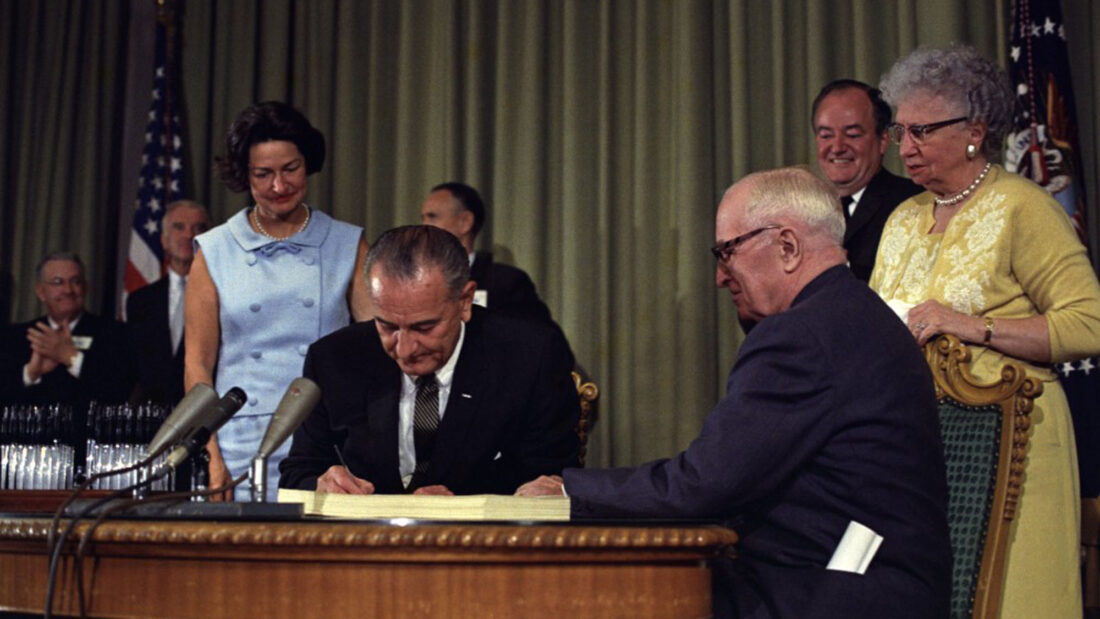
On July 30, 1965, President Lyndon B. Johnson signed the Medicare and Medicaid Act, a historic event that has been transforming the health and lives of millions of Americans for 60 years.
While Medicare was established as a federally administered health insurance program for older Americans, Medicaid was set up as an optional state-run insurance program for people with low incomes, and it was funded with at least 50% of the program’s costs paid for by the federal government.
Several months later, California’s legislature voted overwhelmingly in favor of creating its own Medicaid program, and it was signed into law by Governor Edmund G. “Pat” Brown.
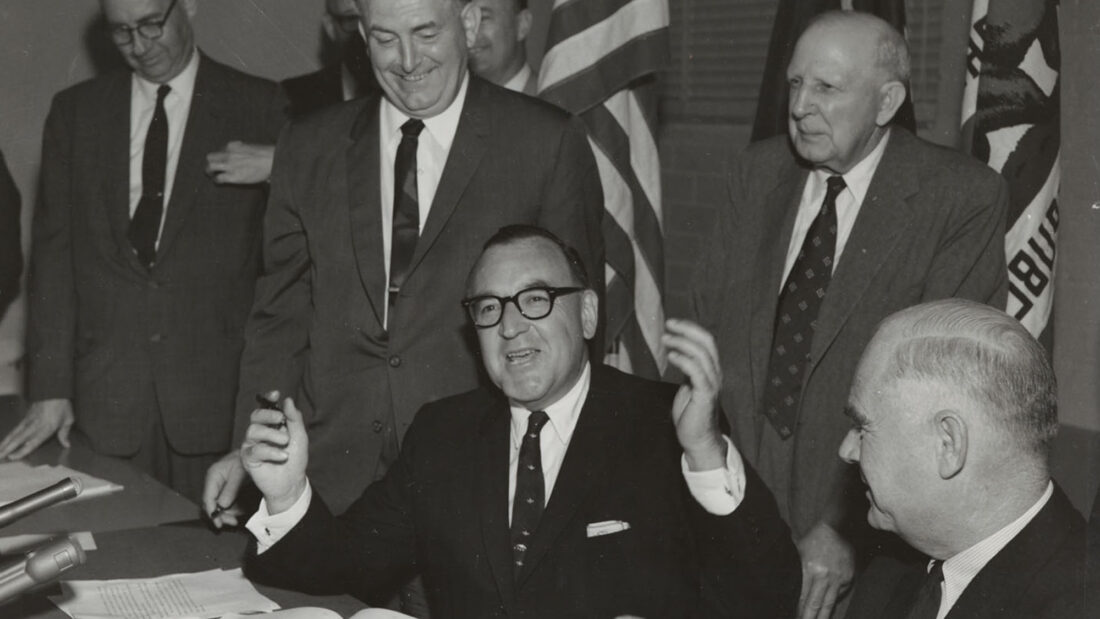
The following year, Medi-Cal opened for business.
Overnight, one million Californians — 6% of the population — became eligible for enrollment in a publicly funded health insurance program covering hospital and emergency services, primary and preventive care, dental care, psychiatric care, and prescription drugs.
As the state faces ongoing economic and political challenges, it is important to recognize how Medi-Cal supports the health and stability of California today and why its ongoing improvement is key to a more prosperous future.
Life Before Medicaid
In the early 1960s, nearly 30% of the population was uninsured. Among those with insurance, most had coverage for hospital or surgical care paid for by their employer. Very few Americans had insurance for primary care.
Two health indicators — infant and maternal mortality rates — illustrate the dramatic impact of Medicaid since the program now covers 41% of births nationwide. While infant and maternal mortality, like all health outcomes, are shaped by factors beyond health coverage, these trends represent progress worth celebrating even as we acknowledge improvement is needed.
“There is another tradition that we share today. It calls upon us never to be indifferent toward despair. It commands us never to turn away from helplessness. It directs us never to ignore or to spurn those who suffer untended in a land that is bursting with abundance.”
President Lyndon B. Johnson, 1965
In its early days, eligibility for Medi-Cal was based on a person’s household income. Only Californians who qualified for cash assistance were eligible to enroll, including people with disabilities and families with dependent children. For those Californians, the benefits were life altering, because people with low incomes or without health insurance were then — and remain today — more likely to experience chronic disease and other health challenges.
But the structure of Medi-Cal also perpetuated harmful stereotypes about who does and does not deserve health care, and it left critical populations out of the program. Working families that earned more than the federal poverty level (FPL) but not enough to afford private insurance, immigrants, and adults with low incomes but without dependent children (including pregnant women) were all ineligible.
Poverty and Medi-Cal
Federal poverty level (FPL) guidelines were introduced in 1966 to determine eligibility for government programs, but household income thresholds were so low that many Californians who could not afford private health insurance did not qualify for cash assistance — and were therefore ineligible to enroll in Medi-Cal. These national income guidelines remain low.
“When you’re poor, you also typically have poorer health. Getting them access to services that they haven’t had access to makes a difference.”
Colleen Grogan, Medicaid scholar
In the last 60 years, California has made immense strides in reducing health disparities by extending coverage to more populations. Seeing the advantages offered by affordable health care and reliable coverage, and when given the opportunity through changes in federal law, state legislators gradually added millions of enrollees by expanding eligibility rules.
Today, almost 40% of Californians rely on Medi-Cal for a wide range of services, including primary and specialty care; hospital care; behavioral health; dental services; long-term care, including assisted living, skilled nursing care, and in-home care; and health-related social services, such as housing navigation supports, home modifications for people with disabilities, and meal assistance.
“From mothers, children, and families, to adults with disabilities and chronic illness, to unhoused and at-risk neighbors, to seniors living in a variety of settings, so many of us are stronger and healthier because we have the ability to receive the care we need.”
Medi-Cal enrollee, Los Angeles County
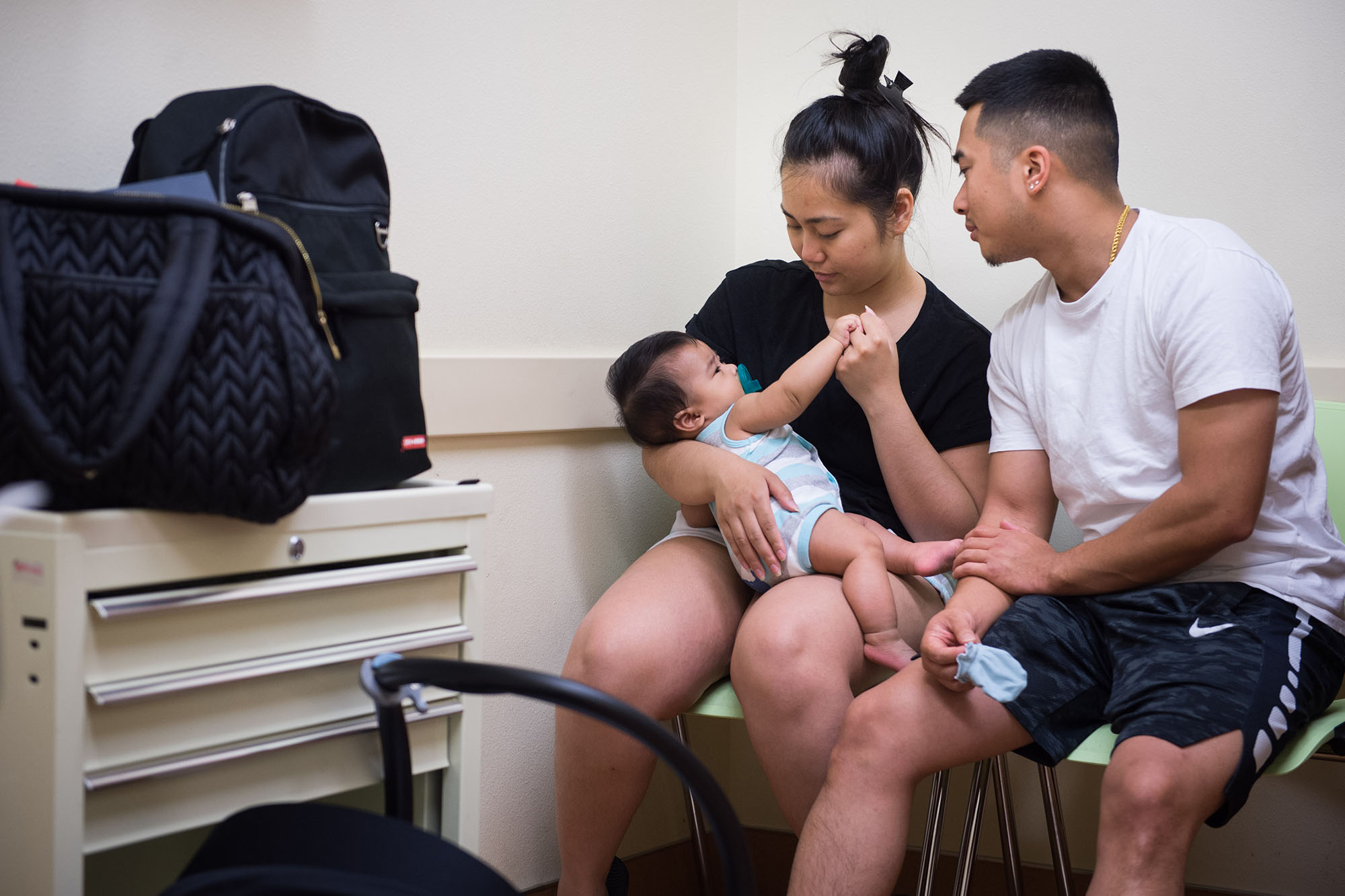
Broad Support for Medi-Cal
Better Coverage and Care for More Californians
Over the past 60 years, Medi-Cal has evolved into a mainstay of California’s health care safety net, offering care and economic security to millions of people and improving the health of communities up and down the state.
From removing eligibility restrictions for green card holders in the 1990s to raising enrollment asset limits so older adults can receive long-term care services while retaining savings, California has been a national leader in building a more inclusive and effective Medicaid program — and a healthier state.
Legislative decisions to expand eligibility have been key to Medi-Cal’s growth. These include:
- 1988: Expansions for pregnant women. Before this legislation, expectant mothers without dependent children were unable to qualify for cash assistance and therefore excluded from Medi-Cal.
- 1997: Adoption of Children’s Health Insurance Program (CHIP). Coverage expanded for children whose family income exceeds the Medicaid threshold. The program also funded California’s Healthy Families Program, which was folded into Medi-Cal in 2013.
- 2014: Implementation of the Affordable Care Act (ACA). The ACA allowed Medi-Cal to extend coverage to most adults with low incomes but without dependent children or disabilities. The federal government pays 90% of costs for new enrollees. In just two years, five million more Californians were insured. California’s uninsured rate fell from 17% before the ACA to a record low 6.4% in 2023.
- Since 2015: Expansions for income-eligible people regardless of immigration status. Immigrants without legal status became California’s largest uninsured group after the ACA took effect. Beginning in 2015, the state gradually lifted restrictions that excluded undocumented Californians, using state funds to open enrollment to all income-qualifying residents regardless of legal status. In 2025, California barred new enrollment for adult undocumented immigrants, effective in 2026. Those who enrolled prior to 2026 can stay in the program, but they will be required to pay a new monthly premium.
“Medi-Cal has allowed me to use the small amount of money I am able to earn for my rent and expenses rather than strictly on health care. If I had to pay for the prescriptions, tests, and doctor visits my chronic illness requires, I would not be able to afford even my most basic needs.”
ACA expansion Medi-Cal enrollee, Los Angeles County
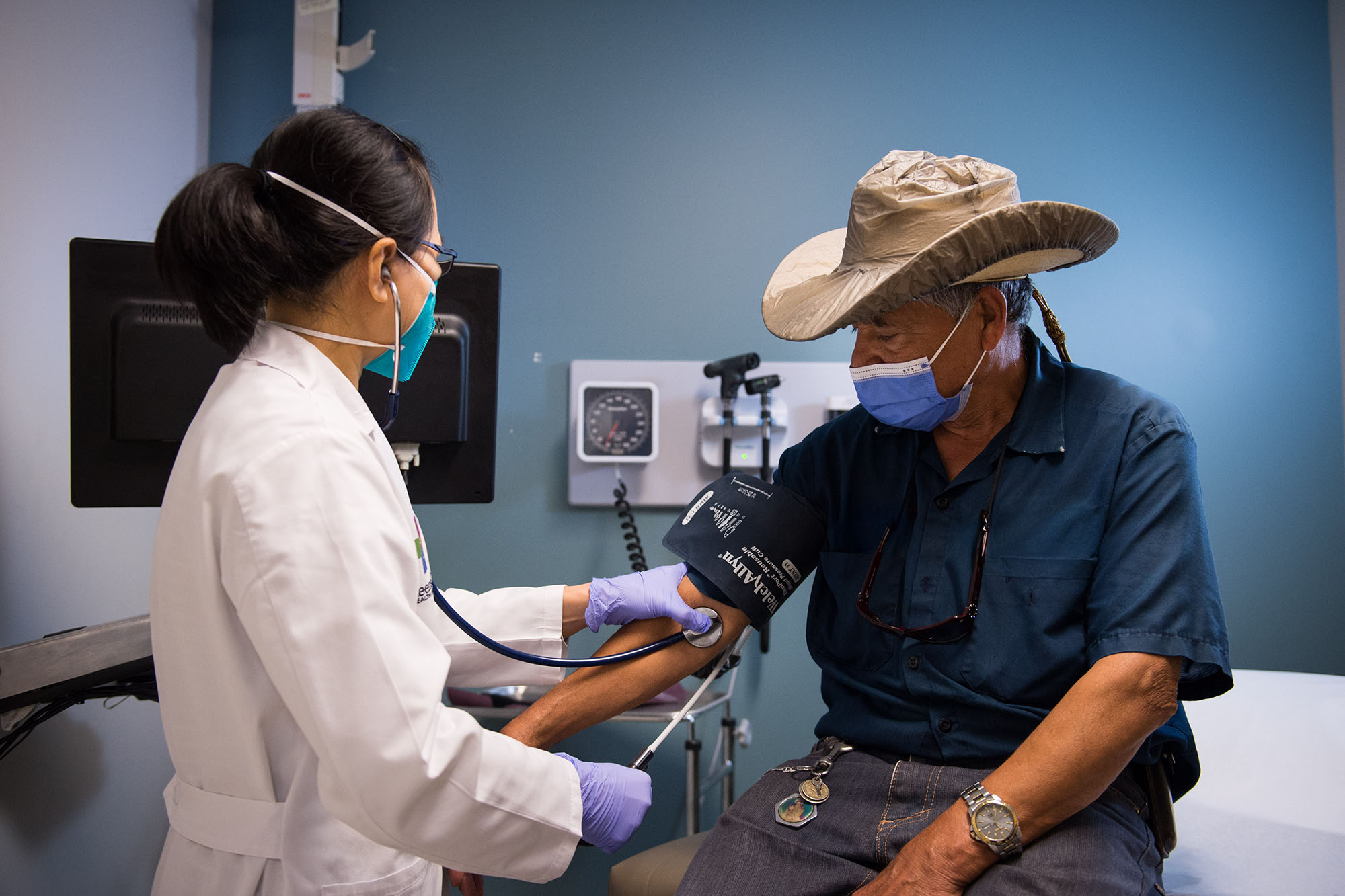
CalAIM
In 2022, California launched CalAIM (California Advancing and Innovating Medi-Cal), a revolutionary initiative aimed at improving care for Medi-Cal enrollees, especially those with complex needs. Target groups include people with complex behavioral health needs, older adults, people with disabilities, individuals who are or have been involved with the criminal justice system, and children and youth in foster care. CalAIM is made possible by special Medicaid waivers that generate federal dollars to combine with state funds to provide crucial social and medical services.
Strengthening California for All
In its six decades, Medi-Cal has improved lives, reduced health disparities, and strengthened the economies of all 58 counties in California. The program has been critical in ensuring that all California children, older adults with low incomes, and people with disabilities get the coverage and care they need to lead healthy lives. By improving their health, Medi-Cal has made California a stronger state for all.
“We wouldn’t have a safety net if it weren’t for Medi-Cal.”
Stan Rosenstein, former Medi-Cal director

Medi-Cal and Children
Medi-Cal has always served children from low-income households and those with complex medical needs. Thanks to eligibility expansions targeting middle-income and immigrant families regardless of legal status, more than half of California’s children are now covered by Medi-Cal. This has enabled California’s uninsured rate for children to fall well below the national average. These successes are partly the result of eligibility expansions that enable parents and caregivers to enroll. The key indicator of a child being insured is if an adult in that household has coverage as well.
“We know that children who have Medicaid do better in school. They’re less likely to be absent. They’re more likely to graduate high school. They’re more likely to go to college. They’re more likely to earn more money as adults than kids who didn’t have health insurance. It’s truly an investment in who we are as people, as Americans.”
Mayra Alvarez, president of The Children’s Partnership
“If we didn’t have Medi-Cal, my son wouldn’t have any services to help him in school. He’s had extra speech, physical therapy. That’s how he was able to crawl, walk, [and] progress.”
Natalie, parent of a Medi-Cal enrollee with autism, Orange County

Medi-Cal and Seniors
Adults over 65 have been a key population since Medi-Cal’s inception. More than one million Californians over age 65 are enrolled today. Their Medi-Cal benefits fill important gaps in services covered by Medicare. Most notably, they are eligible for long-term care benefits. Medi-Cal is the primary payer for more than 60% of California nursing home residents. For older adults enrolled in both Medi-Cal and Medicare, Medi-Cal covers the often-prohibitive cost of Medicare monthly premiums.
“I don’t think the lawmakers understand how difficult it is for those of us who live on a limited income. Medi-Cal has my back. They’re there for me. And I know that I can take better care of my health. Medi-Cal has allowed me to enjoy life. Without it, I’d be financially sunk.”
Wendy, 65+ Medi-Cal enrollee, Riverside County
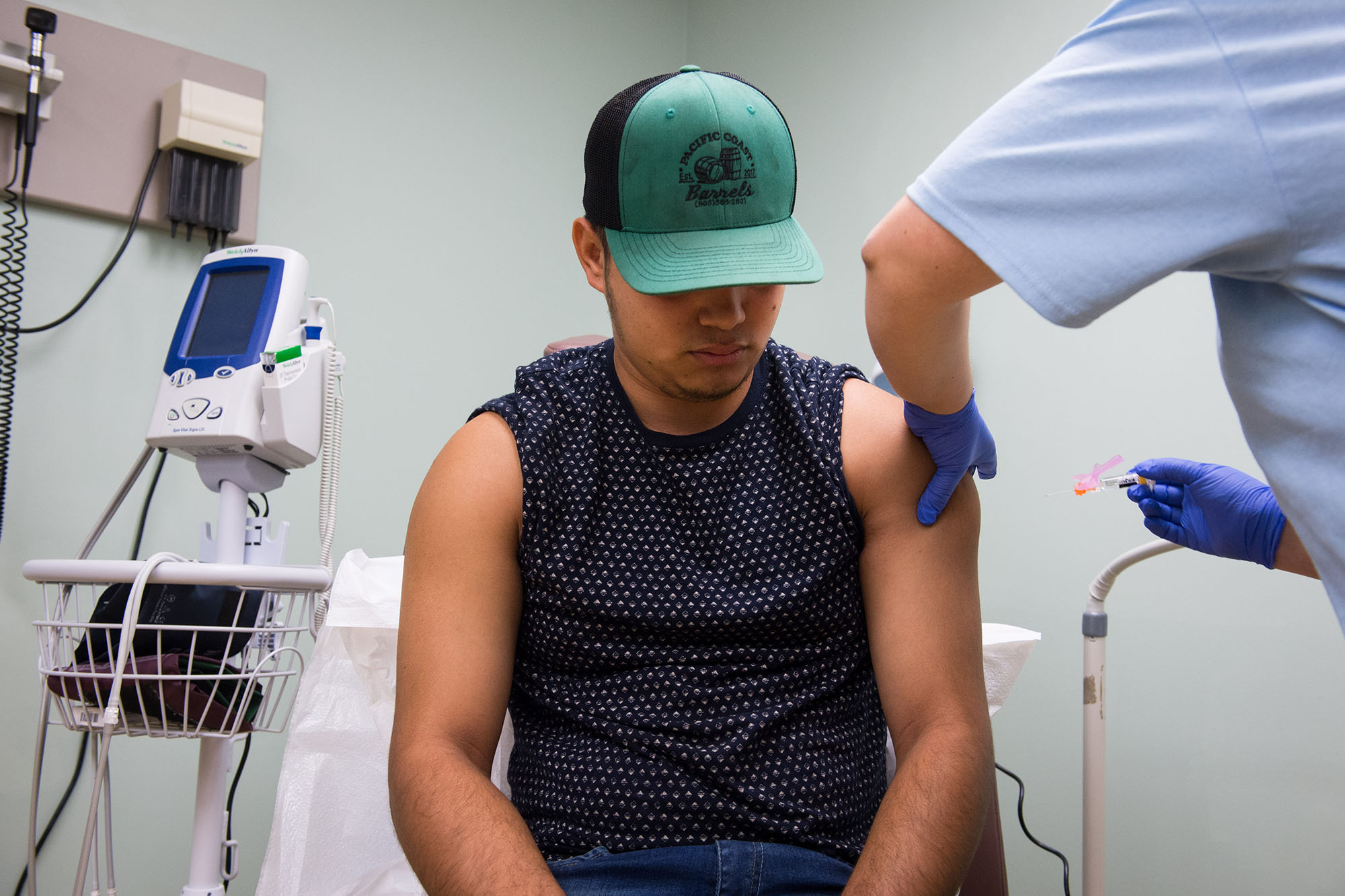
Removing Unfair Barriers to Care
Medi-Cal is a lifeline for historically underserved groups, including those with disabilities, rural residents, and people of color. Recent data show that 29% of Black Californians and 40% of Latino/x Californians under the age of 65 are enrolled in Medi-Cal. Extending coverage to all income-eligible residents regardless of immigration status dramatically improved access to care for undocumented people prior to the 2025 rollbacks. Recent initiatives, most notably those under CalAIM, have launched services geared to groups that face some of the greatest barriers to care, including people experiencing homelessness, people with severe mental illness and behavioral health needs, and people released from jails or prisons.
“I had barely even seen a doctor before I got on Medicaid.… [But] once I got hooked up with them and everything got going, I got healthy.”
Michael, formerly unhoused Medi-Cal enrollee, Santa Barbara County
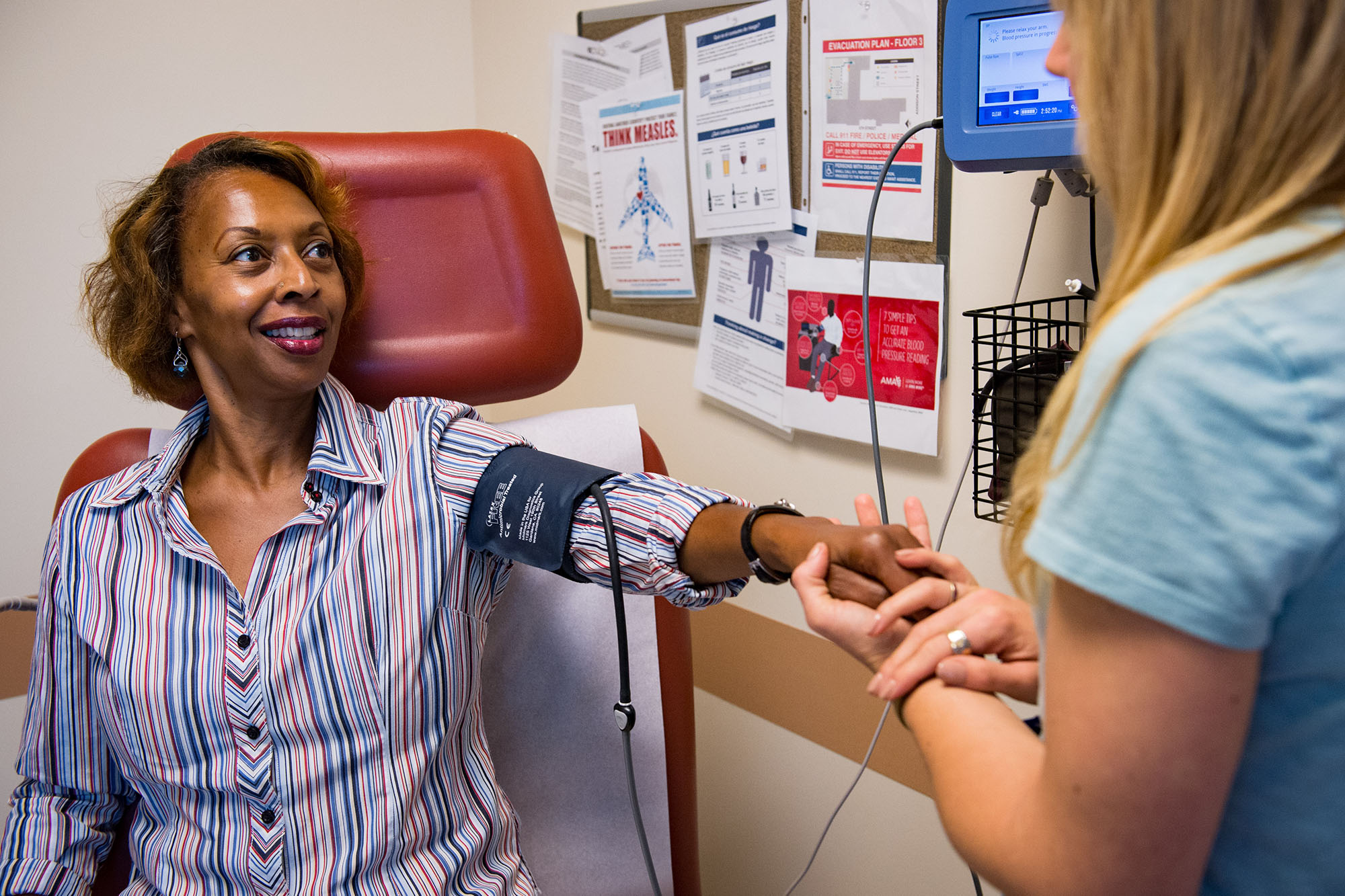
Medi-Cal and the Economy
Medi-Cal is one of California’s most important economic engines, directly supporting hundreds of thousands of jobs statewide in health care, technology, construction, and food services. It is also credited with growing the retail, restaurant, and real estate sectors of the state economy because health care employees spend their wages on goods and services. Medi-Cal enables employed Californians — especially low-wage and hourly workers — to stay healthy and on the job. In 2023, more than 60% of Medi-Cal enrollees were employed, while nearly one in five people age 19 to 64 in the California labor force was enrolled in Medi-Cal.
“Having health insurance improves people’s ability to gain and maintain employment. And when providers have more insured patients, they’re better able to predict their revenues and have financial stability. This benefits all of us.”
Laurel Lucia, UC Berkeley Labor Center
Medi-Cal: A Legacy to Build On
For 60 years, Medi-Cal has steadily enabled more and more Californians to get the care they need to enjoy full and productive lives, which makes the state better for all of us. The Medi-Cal program has achieved this by overcoming significant obstacles, including hospital closures, workforce shortages, and funding cuts.
The program continues to face new challenges. In July 2025, Congress and the president enacted nearly $1 trillion in cuts to Medicaid over the next 10 years — the largest funding reduction in the program’s history. These cuts threaten access to care for millions of Californians. At the same time, state budget challenges have caused California to reinstate some prior restrictions on Medi-Cal eligibility related to immigration status.
In the face of these obstacles, our health care leaders and policymakers must work together to preserve Medi-Cal’s legacy of deep commitment to the well-being of Californians who need a helping hand. All of us — policymakers, health plans, providers, community organizations, and philanthropy — have a vital role to play in its future.
“Medi-Cal stands as a landmark achievement that embodies our shared values and collective progress,” said Sandra R. Hernández, MD, President and CEO of the California Health Care Foundation. “Honoring Medi-Cal this year is not just reflection — it is a call to action. By embracing its accomplishments and the enduring strength of this social contract, we pass the torch to future generations of leaders to fulfill Medi-Cal’s promise in the decades to come.”
Authors & Contributors
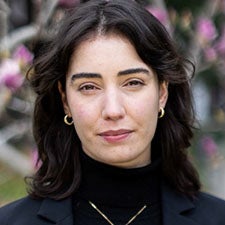
Robin Buller
Freelance writer, researcher, and editor
Robin Buller is an Oakland-based writer, researcher, and editor. She has reported on harm reduction, maternal health, migration, housing, and policing for The Guardian, The Oaklandside, and other publications. Originally from Canada, Buller holds a doctorate in history from UNC Chapel Hill.

Jessica Brandi Lifland
Freelance photographer
Jessica Brandi Lifland is a freelance photographer, instructor of journalism at City College of San Francisco, and mother.





